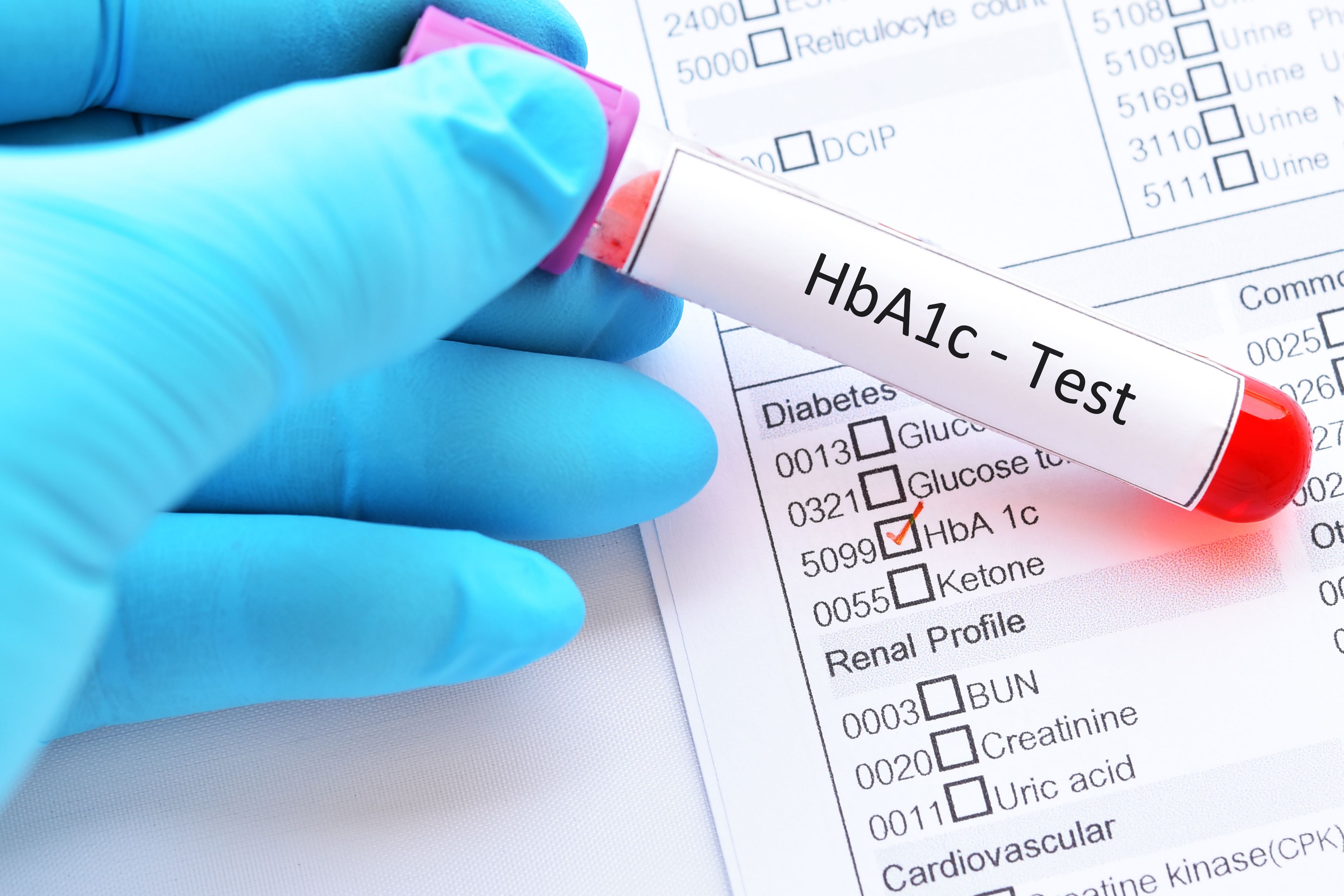- Center on Health Equity & Access
- Clinical
- Health Care Cost
- Health Care Delivery
- Insurance
- Policy
- Technology
- Value-Based Care
HbA1c Above 6% Linked to Much Greater Diabetes Risk in Adolescents
Compared with a hemoglobin A1c (HbA1c) level of 5.5%, adolescents with overweight or obesity were 72 times more likely to have diabetes if their HbA1c was 6.3% to 6.4%.
Having a baseline hemoglobin A1c (HbA1c) greater than 6% has been linked to a substantially increased risk of diabetes among adolescents with overweight and obesity, according to research published in JAMA Network Open.
Compared with an HbA1c level of 5.5%, adolescents with overweight or obesity were 72 times more likely to have type 2 diabetes (T2D) if their HbA1c was 6.3% to 6.4%. In the same comparison, T2D risk was 9-fold and 23-fold among those with HbA1c levels of 5.9% to 6.0% and 6.1% to 6.2%, respectively. These risks varied based on body mass index (BMI), age, sex, and race and ethnicity.
HbA1c test | Image credit: jarun011 – stock.adobe.com

These findings are based on a retrospective cohort study of 74,552 adolescents with a mean (SD) age of 13.4 (2.3) years, all aged between 10 and 17 years, having a BMI at or above the 85th percentile, and without preexisting diabetes. Of this group, 26.9% had overweight, 42.3% had moderate obesity, and 30.8% had severe obesity. The group was predominantly Hispanic (43.6%), followed by White (21.6%), Asian or Pacific Islander (17.6%), Black (11.1%), and other or unknown race or ethnicity (6.1%). The research was conducted at Kaiser Permanente Northern California (KPNC) using electronic health record data from January 2010 to December 2019, and was supported by a grant from the KPNC Community Health program. While the authors all have affiliations with Kaiser Permanente, they said the KPNC Community Health program had no role in the study’s design or conduct.
Adolescents were followed through 2019, and during this time, 698 adolescents (0.9%) developed diabetes, with 626 (89.7%) developing T2D and 72 (10.3%) receiving a diagnosis of type 1, secondary, or other diabetes. Overall T2D incidence was 2.1 (95% CI, 1.9-2.3) per 1000 person-years, and the 5-year cumulative T2D incidence was 1.0% (95% CI, 0.9%-1.1%).
The authors found that the higher the baseline HbA1c, the higher the 5-year cumulative T2D incidence, with the following relationships between HbA1c and 5-year incidence:
- <5.5%: 0.3% (95% CI, 0.2%- 0.4%)
- 5.5% to 5.6%: 0.5% (95% CI, 0.4%-0.7%)
- 5.7% to 5.8%: 1.1% (95% CI, 0.8%-1.3%)
- 5.9% to 6.0%: 3.8% (3.2%-4.7%)
- 6.1% to 6.2%; 11.0% (95% CI, 8.9%-13.7%)
- 6.3% to 6.4%: 28.5% (95% CI, 21.9%-36.5%)
Additionally—and expectedly, with the association between baseline HbA1c and cumulative incidence being established—higher baseline HbA1c was associated with greater T2D risk. Compared with the reference HbA1c 5.5%, each level was linked to the accompanying increased risk:
- 5.5% to 5.6%: HR, 1.7 (95% CI, 1.3-2.2)
- 5.7% to 5.8%: HR, 2.8 (95% CI, 2.1-3.6)
- 5.9% to 6.0%: HR, 9.3 (95% CI, 7.2-12.1)
- 6.1% to 6.2%: HR, 23.3 (95% CI, 17.4-31.3)
- 6.3% to 6.4%: HR, 71.9 (95% CI, 51.1-101.1)
Multivariable analyses were adjusted for age, sex, race and ethnicity, BMI category, and Neighborhood Deprivation Index quartile. Beyond baseline HbA1c, the authors found other factors that were independently associated with T2D risk. Having moderate or severe obesity, being female, and being older in age put adolescents at higher risk of diabetes than if they had overweight, were male, or were younger. Additionally, compared with White individuals, those of Asian or Pacific Islander race were more likely to develop diabetes. All of these findings were consistent with past research. The authors noted that although Black and Hispanic adolescents in the study had higher mean baseline HbA1c, they did not have a higher diabetes risk after adjusting for baseline HbA1c level.
The American Diabetes Association currently recommends diabetes screening for adolescents with overweight or obesity who have hit puberty or are 10 years or older—whichever occurs first—who are at risk for diabetes based on several criteria. According to the study authors, diabetes surveillance among adolescents should take the study’s findings into account and be tailored to optimize identification among subgroups at high risk.
“Although HbA1c was a strong indicator of T2D, risk was also associated with obesity severity, age, female sex, and Asian or Pacific Islander race,” the authors said. “Hence, T2D surveillance in adolescents should be primarily based on HbA1c but should also consider these other risk factors when optimizing prevention strategies for those at highest risk. Research is needed to determine which interventions (eg, lifestyle intervention, pharmacotherapy, or other treatment) are most effective in preventing progression to T2D among those at highest risk.”
Reference
Hoe FM, Darbinian JA, Greenspan LC, Lo JC. Hemoglobin A1c and type 2 diabetes incidence among adolescents with overweight and obesity. JAMA Netw Open. 2024;7(1):e2351322. doi:10.1001/jamanetworkopen.2023.51322
